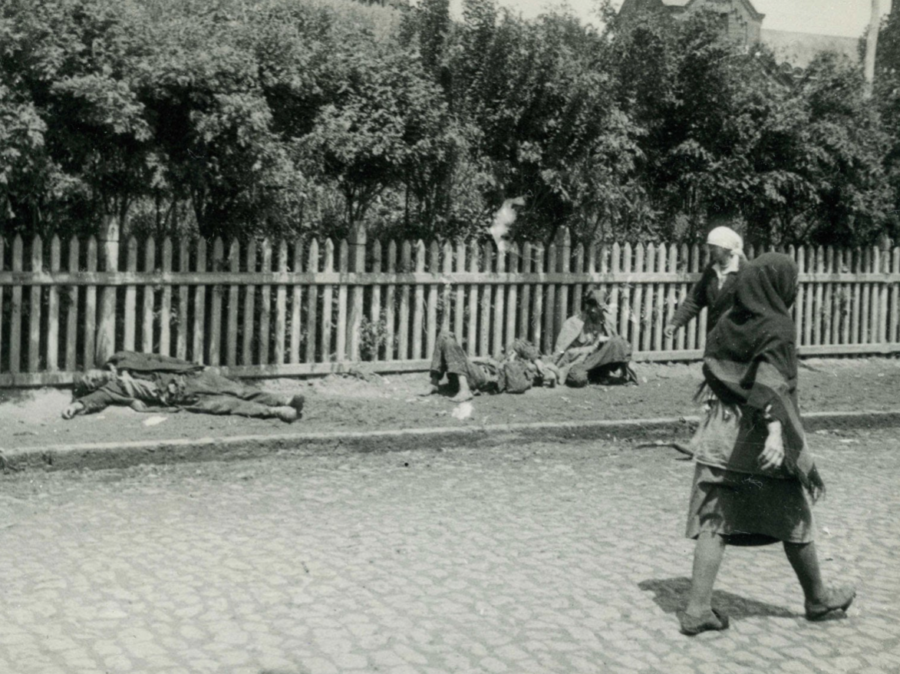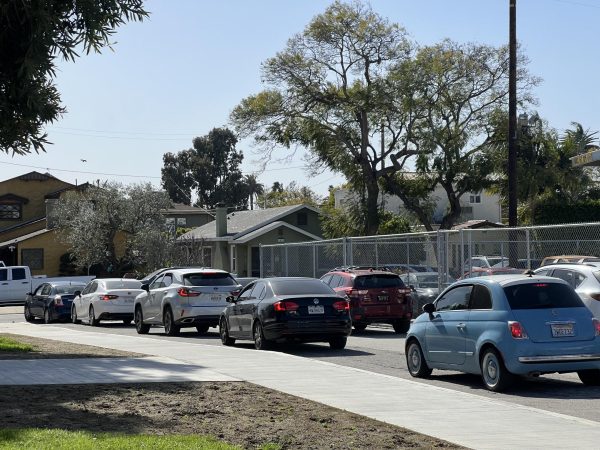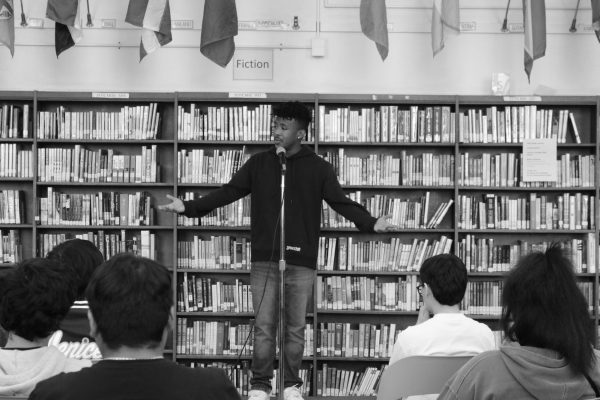“Remember, It’s Wrong to Eat Your Children:” Chronicles of the Ukrainian Genocide
November 27, 2021
It is the winter of 1933 and buildings across Kharkiv, Ukraine is covered in repulsively drawn Soviet propaganda posters. “Remember, it’s wrong to eat your children,” they say, while the streets are covered with hundreds of decomposing bodies. Corpses are lying there almost casually as the people walking by don’t even bat an eye on the horrors of their daily lives.
The dead people lying on the cold concrete were killed by forced starvation. A year before, the communist government ordered the taking away of all the food produced in Ukraine from its people with only one purpose in mind—to exterminate the local population.
Miles west of Kharkiv is a small village in central Ukraine. Most of the villagers have passed away from hunger. Those who survived managed to do so by eating grass, pigeons if they were lucky — and sometimes, other people.
One of the surviving villagers was a six-year-old girl named Halyna who lived in a big house with her family. One day she went to the garden, although her parents strictly forbade her and her siblings from leaving their house. Across the street, Halyna saw an old woman waving at her and calling her in. The woman was an old-time neighbor.
Because of the loud winter wind, Halyna couldn’t hear what she was saying, so she started walking towards the old lady until Halyna’s older sister ran outside, grabbed her by the hand, and took her home. A few weeks prior to this incident, the old woman lost her mind because of hunger and killed and ate her two children.
What you just read is not an excerpt from some horror fiction book. It is a real story that my grandma used to tell me when I was a kid. Halyna was my great-grandmother. It is a story of surviving Holodomor, the genocide of the Ukrainian people. Holodomor, which translates to “to kill by starvation” from Ukrainian, was a man-made famine that was carried out by the Stalinist regime from 1932 to 1933 that killed millions of innocent Ukrainians.
When Ukraine became part of the Soviet Union in 1922 — just five years after gaining independence from the Russian Empire — the Ukrainian people were once again forced into Russification. In an attempt to kill the national identity of Ukrainians, the communists set out to eradicate Ukrainian culture by forbidding the Ukrainian language and propagating the narrative that all Ukrainians were uneducated peasants who were inferior to Russians. The actions of the Kremlin were met with resistance from Ukrainians that grew stronger each year until it was almost uncontrollable.
In 1929, Joseph Stalin introduced the Collectivization Policy, which forced farmers and other property owners to hand their lands and produce over to the state. Many Ukrainians were unwilling to give up their rightfully earned farms, for which they endured severe consequences.
Among those Ukrainians were two of my great-granduncles, Stepan and Ivan. They were wealthy farmers that provided jobs and food for other villagers. When the communists came to their village sometime around 1930, they tried taking away everything that my family has worked for throughout their lives.
Stepan and Ivan weren’t pleased with the idea of handing over everything they owned to a state that didn’t even see them as human beings. So they chased the red officers out of their homes all the way into a freezing river. Shortly after, Ivan and Stepan were proclaimed enemies of the people and exiled to the Siberian Gulags from which they never came back.
When collectivization was met by uprisings all across Ukraine, the government decided that the only way to turn the nation of non-complying “kulaks” (a derogatory term translated as “fist” from Russian used by the communists to describe a well-off farmer) into a nation of obedient citizens was to torture and kill Ukrainians altogether.
In 1932, the communist government ordered that all wheat, crops, and food produced in Ukraine be taken away from the people. The Soviets masked the deliberate killing of ethnic Ukrainians by at first stating that there was no hunger in Ukraine at all and then by stating that it was simply a bad harvest. The place that was once known as the breadbasket of Europe witnessed its own people so desperate for food that they ate literal grass, domestic pets, and in worst cases other people.
Ukrainian streets were filled with children who looked more like living skeletons than humans. No visible muscles or fat—just bones covered in the skin with bloated tummies. My father’s grandmother told him that after starving for weeks on end, her legs began to swell and pop.
To ensure that the Soviets were successful in their attempts of exterminating the Ukrainian people, they declined any foreign aid that was offered and implemented strict policies that punished Ukrainians for trying to seek food. One of those policies was ”The Law of Spikelets” which enforced on-the-spot shootings or concentration camp incarceration of over a decade for anyone who was caught stealing even a single spikelet from “collectively owned” fields.
One of the by-products of collectivization was the Kokhozes, state-owned farms that were formed by taking away all the belongings of local farmers including their entire livestock.
My great-great-grandfather was forced to become the head of the Kolkhoz of his village right before the Holodomor began. When he witnessed the horrors of people in his own home village starving to death, he went against the authorities and freed all the animals so that the people could eat something. He was proclaimed the enemy of the people for going against collectivization and exiled to a gulag in Siberia for an entire decade.
At the height of Holodomor in June 1933, 28,000 people were dying each day. The real numbers of the people killed remain unknown as the Soviets did not keep precise records of their crimes against humanity. Various historians estimate the death toll to be between 3.9 million to over 10 million people in just a single year. Yet for many decades, the Kremlin tried hiding and denying the crimes committed against Ukrainian people in the years of 1932 and 1933.
The fourth Saturday of November is considered the Holodomor Remembrance Day. This year, it falls on November 27th. Ukrainians all across the world will light up candles and put them next to their windows as a way to remember those who have perished in the Holodomor.
Under the Soviet regime, my family was stigmatized, and no one was allowed to even mention the names of the “enemies of the people.” Today, after decades of communist oppression, my family is free to remember and grieve over the millions of innocent souls who passed away from 1932-1933.
It has been almost 90 years since Holodomor took place, but the pain and sorrow never went away. Every fourth Saturday of November, my family lights up candles and puts them next to the windows across our entire house. We take the time to reflect on and grieve over the atrocities committed against our family, our ancestors, and the Ukrainian people.






Rafael • Nov 30, 2022 at 11:38 AM
The entire world should be crying for this atrocities committed against our brothers and sisters.
Leila • Sep 9, 2022 at 1:17 AM
I studied a little bit of the Holodomor in high school but I never realized it was that shocking. « Remember, it’s wrong to eat your children », this makes me shudder!
Galyna • Apr 10, 2022 at 12:43 AM
Thank you, Polina. Let us pray that this does not happen again and that it ends soon in Ukraine.
Jerry • Oct 9, 2023 at 9:18 PM
I still can’t understand the Russian people that back this atrocitie. Can they learn nothing from their own history?